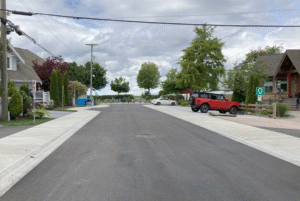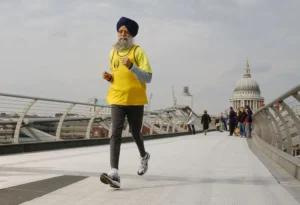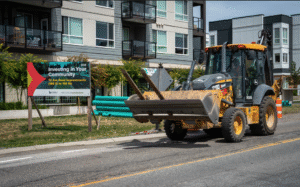Surrey, B.C. – At the last regular council meeting, Surrey Council adopted the Surrey Sidewalk Action Plan, which will expand the city’s sidewalk network and improve pedestrian safety and connectivity across the city through a structured, priority-based approach. Over the next two years, the plan will provide approximately 7.5 kilometers of new sidewalks through 23 projects, improving access and safety to 23 schools, 55 bus stops, and 23 parks across the city.
“Sidewalks are essential to accessibility, connecting communities, and making our city sustainable,” said Mayor Brenda Locke. “This Sidewalk Action Plan demonstrates our commitment to road safety and to investing in our infrastructure where sidewalks are most needed – near schools, parks, transit, grocery stores, and high-traffic areas where people live, work, and play. ”
The city’s goal is to provide sidewalks on both sides of all major roads and at least one side of most local roads, except in cul-de-sacs, low-lying areas, and Agricultural Land Reserves (ALR).
Staff estimates that 558 kilometers of sidewalks are still needed across the city to achieve this goal and could cost $400 to $500 million. At current funding levels, it could take the city about 50 years to complete the required network .
“The new framework helps us prioritize investments in sidewalks where they can be most effective and make the most of the city’s resources,” said Transportation Director Rafael Villerreal. “We will continue to prioritize major roads where high speeds and high volumes of traffic pose the greatest safety risks, but we will also focus on “brownfield” areas where development has already occurred and redevelopment opportunities are limited. We will also prioritize streets that are within 800 meters of schools, transit facilities, parks, and grocery stores where residents want to walk. ”
The outline of the priority for capital investments on sidewalks according to the city’s new plan is as follows:
- In brownfield areas, which fall within 800 meters of schools/transit/grocery stores/parks, there are 63 kilometers of main roads that do not have sidewalks.
- There are 118 kilometers of main roads in brownfield areas and within 800 meters of schools/transit/grocery stores/parks where there is only one sidewalk.
- Local roads in brownfield areas, those within 800 meters of schools/transit/grocery stores/parks, are without sidewalks and eventually
- Greenfield areas, such as Tynehead, West Clayton, and Grandview, where pedestrian activity is currently low and redevelopment potential in the near future is high.
The city has planned to fund sidewalk projects through a combination of funding from the city’s Roads and Traffic Safety Levy, Development Cost Charges (DCCs), and external grants.
For more information on the Sidewalk Action Plan and Priority Framework, read Corporate Report CR_2025-R150.pdf.








